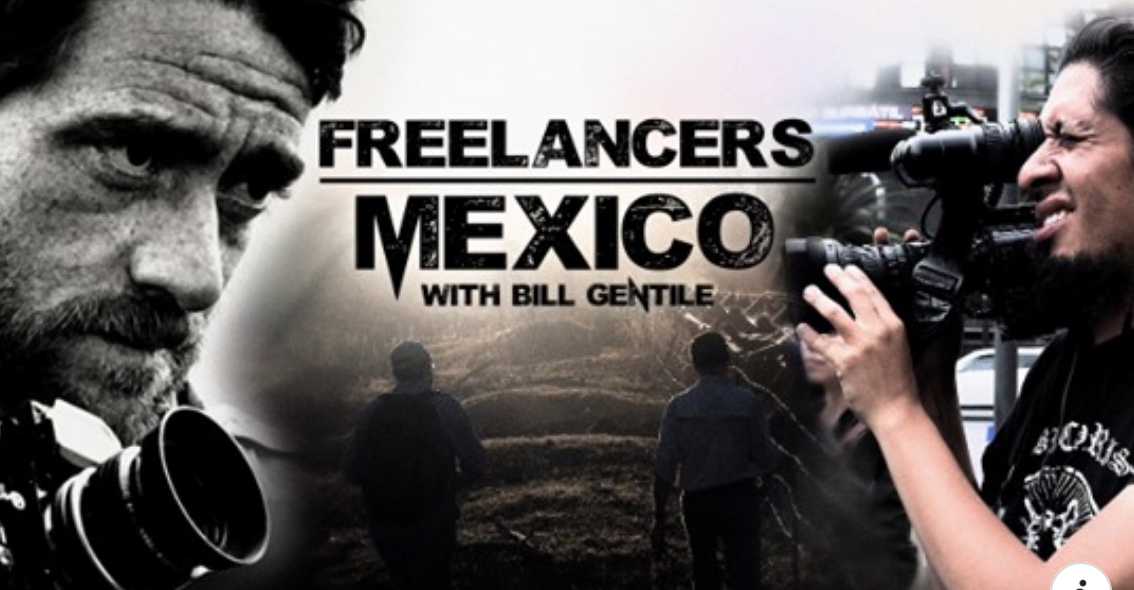
DC Pro Chapter program screens ‘Freelancers—Mexico’ film at Newseum
By Stephenie Overman
In the documentary film “Freelancers—Mexico,” director Bill Gentile presents freelance backpack journalists covering drug trafficking along the U.S.-Mexico border, bringing critical issues to light as they work without the traditional support or security of being staff correspondents.
About 80 people attended an SPJ DC Pro Chapter-sponsored screening of the film at the Newseum Dec. 14, 2019. The film is the first in a planned series of documentaries on covering dangerous parts of the world.
After the screening, Gentile and a panel including freelance journalists discussed how to make the backpack approach work in a time when the news media is often under attack.
It’s “bittersweet” that “just when we need journalists and journalism the most, we face staff cuts,” Gentile said. But a backpack journalist – a trained professional using a hand-held digital video camera – can help fill the gaps because “we can communicate instantly, globally and in language everyone can understand. Visually.” The veteran foreign correspondent teaches the subject in English and Spanish at American University in Washington.
Panelist Tracy Wilkinson, a foreign affairs correspondent for The Los Angeles Times who works from the Washington bureau, also noted the cutbacks major U.S. news organizations have made in their foreign coverage.
“The LA Times at one point had 30 bureaus. Now there’s no one in Europe. In Mexico we had four, five, six correspondents. All that’s been reduced over time,” said Wilkinson, who was The Times’ Mexico bureau chief from 2008 to 2015.
With this retrenchment “we’re relying a lot on freelancers to take up the slack,” she said. “I wish the institutions would step up more” to help freelancers, but “we should not portray freelancers as victims. Freelancers are gaining from this. It’s mutual.”
We did everything you saw on the screen on a camera that could fit in your front pocket. We didn’t have a crew. Just Bill and I. We had one backpack for everything we did.
— Matthew Cipollone, associate producer ‘Freelancers–Mexico’
For those who want to take up backpack journalism, panelist Fernando Pizarro recommended finding a hub where news is being generated, one with good transportation to other hot spots. Pizarro is the Washington Affiliates correspondent for the Univision Television Group.
The other important thing, he said, is “be up on your technology. New generations have to do everything – shoot, be online, use social media. You’re going to get sent out by yourself. That’s tricky, especially if it is a dangerous place.”
Matthew Cipollone, the film’s associate producer, director of photography, sound recordist and editor, explained how backpack journalism works. “We did everything you saw on the screen on a camera that could fit in your front pocket. We didn’t have a crew. Just Bill and I. We had one backpack for everything we did.”
That allowed them to keep a low profile, Cipollone said. “We wouldn’t have had a large shoulder camera at the border at night. We needed to be safe and blend in. Even in broad daylight I wouldn’t have been comfortable. We would have missed half the scenes.”
Becoming a backpack journalist requires perseverance as well as technical skills, Cipollone said. “Just keep putting yourself out there. Do your homework. Look for what they need help with. Be diverse. You’d be surprised how many people will say yes.”
